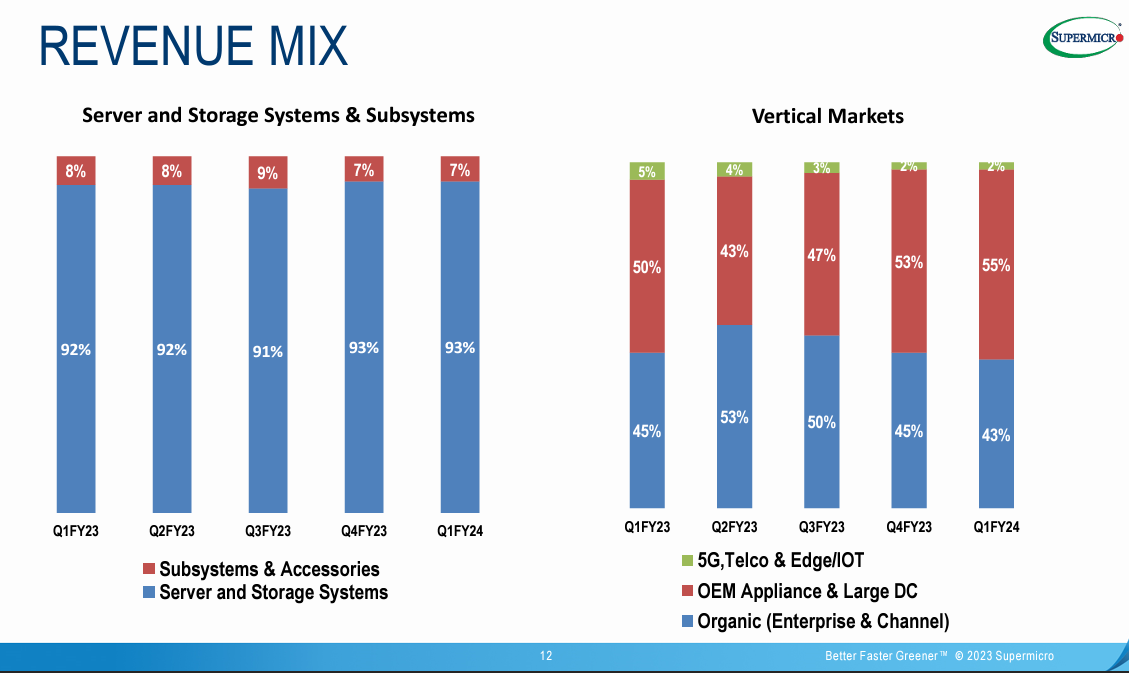Supermicro said its second quarter results will be stronger than expected as demand for its AI, cloud and storage rack systems surged.
The company said that its second quarter revenue will be between $3.6 billion and $3.65 billion compared to its previous guidance of $2.7 billion to $2.9 billion. Earnings will be $4.90 to $5.05 a share on a GAAP basis compared to previous guidance of $3.75 a share to $4.24 a share. Non-GAAP earnings for the second quarter will be $5.40 to $5.55 a share.
Supermicro didn't detail what was driving its better-than-expected results, but the likely reason is demand for generative AI systems. Supermicro said its liquid cooled rack systems were seeing strong demand. In addition, AMD has launched its GPUs for generative AI workloads to compete with Nvidia. All of those developments likely add up to strong AI server sales for Supermicro.
The server maker’s outlook indicates that the booming demand seen by Nvidia is not filtering down to server companies. Both Dell Technologies and HPE have signaled strong pipelines for generative AI systems.
- Why vendors are talking RPOs, pipelines, pilots instead of generative AI revenue
- How AI workloads will reshape data center demand
- The New 2023 Cloud Reality: A Rebalancing Between Private and Public
Speaking at a recent investment conference in December, CFO David Weigand said the slate of emerging technologies for AI workloads and next-generation data centers is playing into Supermicro's strengths. Weigand said:
"Super Micro's strength is the fact that we are approximately 50% engineers. We are an engineering company, and that fact is helping us now because technological development has sped up. You have multiple platforms with Nvidia, AMD and Intel, ARM solutions, as well as others. There are a lot of emerging technologies. And this is really playing into Supermicro's model, which is our building block solutions that we architected the server technology from the ground up."
Weigand added that Supermicro's in-house designed servers enable it to integrate new technologies for custom workloads. "We design something unique for a customer that not only gives them the very best cost performance metric, but it also gives the lowest total cost of ownership, because we have designed our servers to be low power consumption and to manage heat," said Weigand. "With GPUs going past 1,000 watts and dissipating a thousand watts of heat and CPUs dissipating in excess of 500 watts of heat, heat is becoming more important. Our ability to provide liquid cooled solutions and what we call green computing or the lowest amount of heat dissipation allows us to have a competitive edge."



